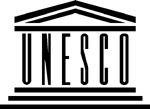|
COMMON APPLICATIONS
1. Presentation Software allows you to produce
a slideshow, with all special effects such as fading in and
out of particular slides. Graphics, sound and video clips
can also be inserted in the slide-show.
Microsoft PowerPoint is an example of presentation software.
2. Spreadsheet Packages are used for working with
figures, doing calculations and doing "what if" type of analysis.
Its power lies in the fact that entries can contain formulas
and functions which calculate numbers based on numbers and
formulas in other entries. Computer spreadsheets automatically
and almost instantly when changes are made in any entry (entries).
Spreadsheets also allow you to produce graphs (charts) of
various different types based on the figures in a spreadsheet.
Microsoft Excel is an example of a spreadsheet program.
3. A database allows you to compile information and
then to search this information to extract the bits you require.
Examples of paper databases in schools may include dictionary,
encyclopaedia, library card catalogue, Atlas, telephone directory,
conventional drawer files containing staff and students' bio-data
etc.
Electronic (computer) databases allow educators to take advantage
of the speed, accuracy and large storing capabilities of computers
in order to increase the operational speed and accuracy of
information generated from the databases.
Competency in electronic database management goes a long way
in saving time and effort expended in storing, managing and
generating reports especially from textual information.
Microsoft Access is an example of a database program.
4. Word Processing Packages (used for typing, storing
and changing text such as in letters, project reports, essays
etc.)
Microsoft Word is an example of a word processing program.
|
